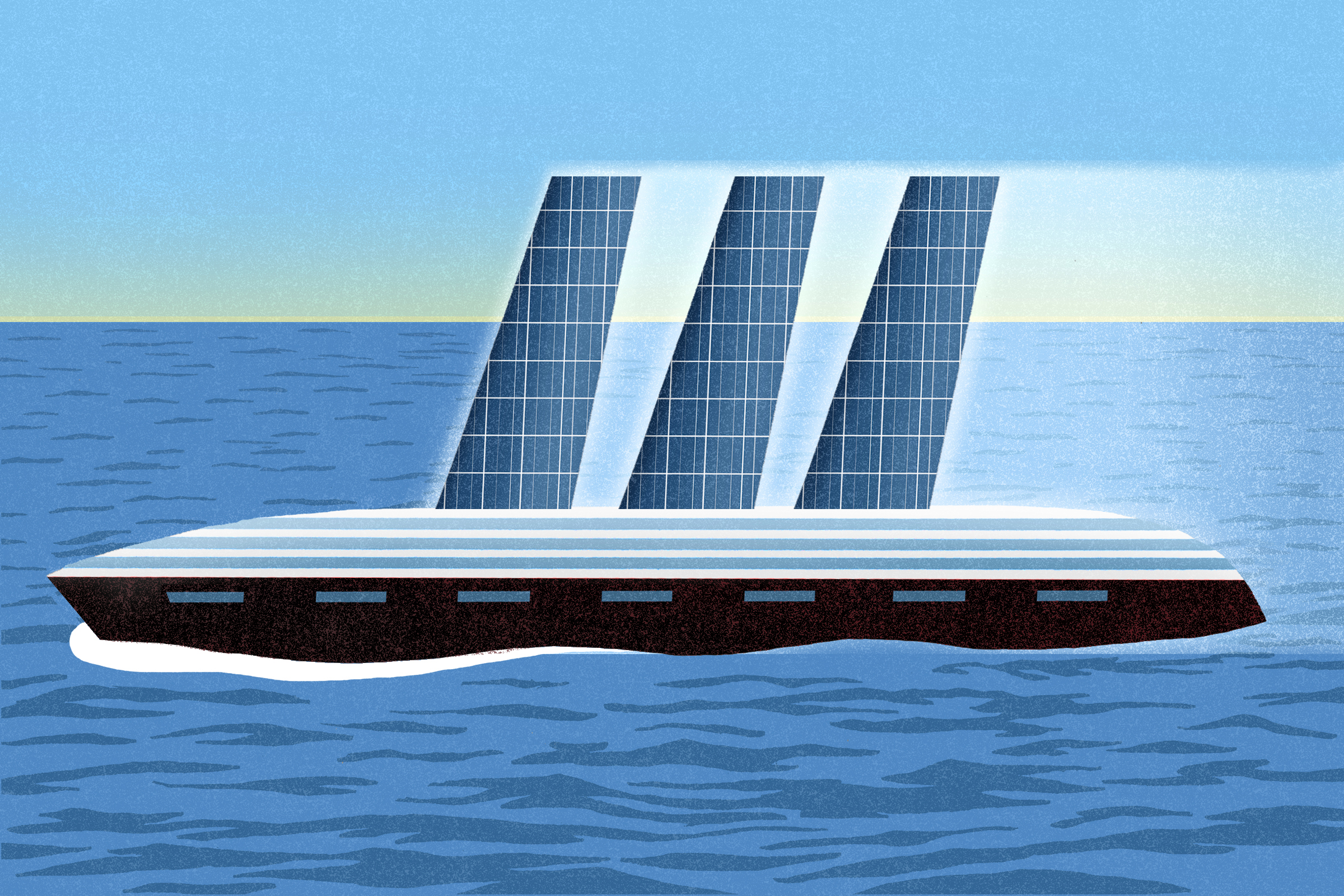To future archeologists, mega cruise ships might be some of the strangest artifacts of our civilization—these goliaths of mass-engineered delight, armed with dangling water slides and phalanxes of umbrellas. Looking up at one, you might gain the impression that cruise companies are trying to awe their customers into having a nice time. We have built battleships of pleasure, toiling the world’s oceans, hunting for fun.
It probably won’t come as a shock that the whole thing isn’t exactly sustainable. A medium-sized cruise ship spews greenhouse gas emissions equivalent to those of 12,000 cars, while environmentalists accuse big industry players of investing little in decarbonization, and of covering up endless delay tactics in a heavy coat of greenwash. And for years, the industry has been dogged by bad PR from everything from routine dumping of toxic sludge to increasingly organized outrage from communities tired of hordes of tourists getting dumped at their docks.
The big question, though, is whether those customers buying cruise packages to the Bahamas or Alaska particularly care. It’s easy to make the case that they don’t. Despite the industry’s continued investment in new fossil fuel-powered ships, cruise ticket sales are projected to climb back to record 2019 sales levels this year after a hit during the pandemic, according to the latest industry association report.
More from TIME
At least one cruise company, though, is betting that at least some potential customers care about sustainable vacations. Hurtigruten, a specialty cruise line based in Norway, says it has built its last fossil fuel-powered ship. On June 7, the company unveiled new details about the technologies it’s testing in pursuit of the world’s first zero-emission cruise ship, and renderings of what the boat might look like. Instead of towering over the ocean, the ship seems to cling close to the water, the better to reduce air resistance. In place of smokestacks, the designers envision retractable sails that double as solar panels. It runs on batteries instead of the thick, sticky fuel oil that powers most ships. And it’ll be ready, the company hopes, by 2030.
With time running short to phase out fossil fuels and avert the worst effects of climate change, the moral argument is compelling. But big businesses often make their decisions on what they might consider more practical concerns than what is “right” and “wrong.” It’s possible that Hurtigruten and its zero-emissions vessels could turn the industry ship around. But it could just be a green fluke, a new offering for a small slice of climate-conscious vacationers, as the rest of the industry chugs on as before.

Designing a green cruise line
Just about every CEO wants to be counted as an environmentalist these days. But Daniel Skjeldam, the CEO of Hurtigruten is one of those few who doesn’t dance around one of the more uncomfortable dimensions of our climate problem: the apparent conflict between the endless pursuit of more, bigger, better, and the limits of the earth’s biosphere.
“I think it’s sheer wrong to build bigger and bigger and bigger cruise ships,” Skjeldam says. The average cruise ship has around 3,000 passengers, but cruise companies have been investing in ever-bigger liners. “7,000 [passengers], 8,000, 9,000,” Skjeldam says. “It’s just wrong.”
The idea of running a cruise line occurred to Skjeldam back in 2012. Hurtigruten (the name means “Express Route” in English) was losing money, and Skjeldam, then commercial director at European budget airline Norwegian Air Shuttle, thought he could turn things around. He wasn’t in consideration for the role, though, so over the course of several weeks, the ambitious then-37-year-old executive repeatedly called through to the switchboard at the office of the company’s chairman, until finally he was able to come in and give his pitch in person.
It wasn’t long after that Skjeldam, officially appointed as CEO in October of that year, was on a Hurtigruten ship sailing past the Svalbard archipelago, home to the world’s northernmost inhabited town. He was on the bridge, having a cup of coffee with the captain, a five-decade veteran at the company, who pointed out a glacier several miles away. When he started sailing for the company in 1980, the captain said, the glacier had reached all the way to where they were floating now.
The experience, for Skjeldam, was eye-opening, and under his leadership, the company began making investments in sustainability long before some of the bigger players in the industry started doing the same. In 2016, the company began outfitting its ships to use power from the grid while tied up in port instead of burning their own fuel—the technology can reduce air pollution when ships are docked by up to 70%. That year, Hurtigruten ordered the world’s first hybrid-power cruise ships, and started offering cruises on its first, the MS Roald Amundsen in 2019, which the company says has about 20% lower emissions than a similarly sized conventional ship. The company now operates four such vessels.

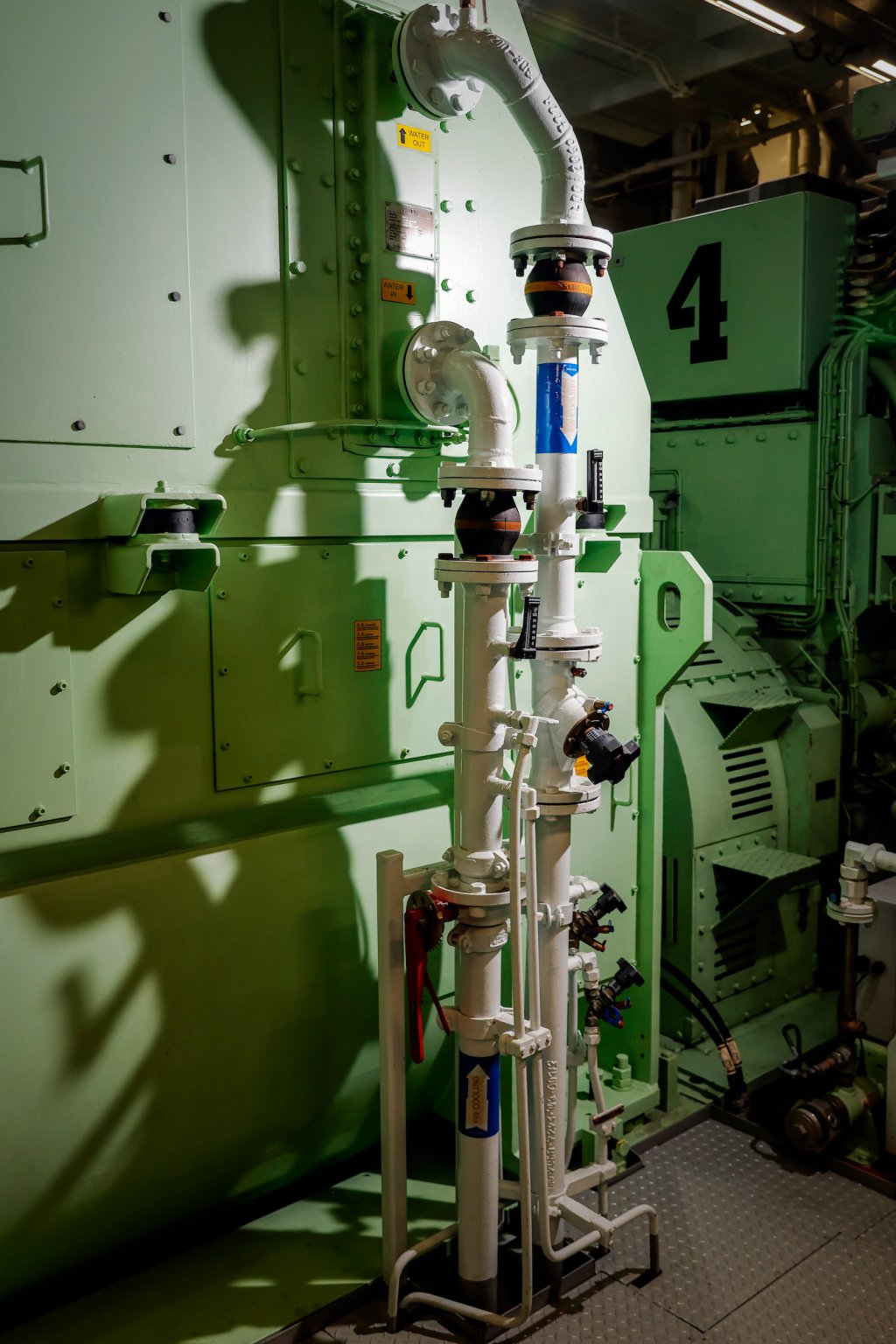
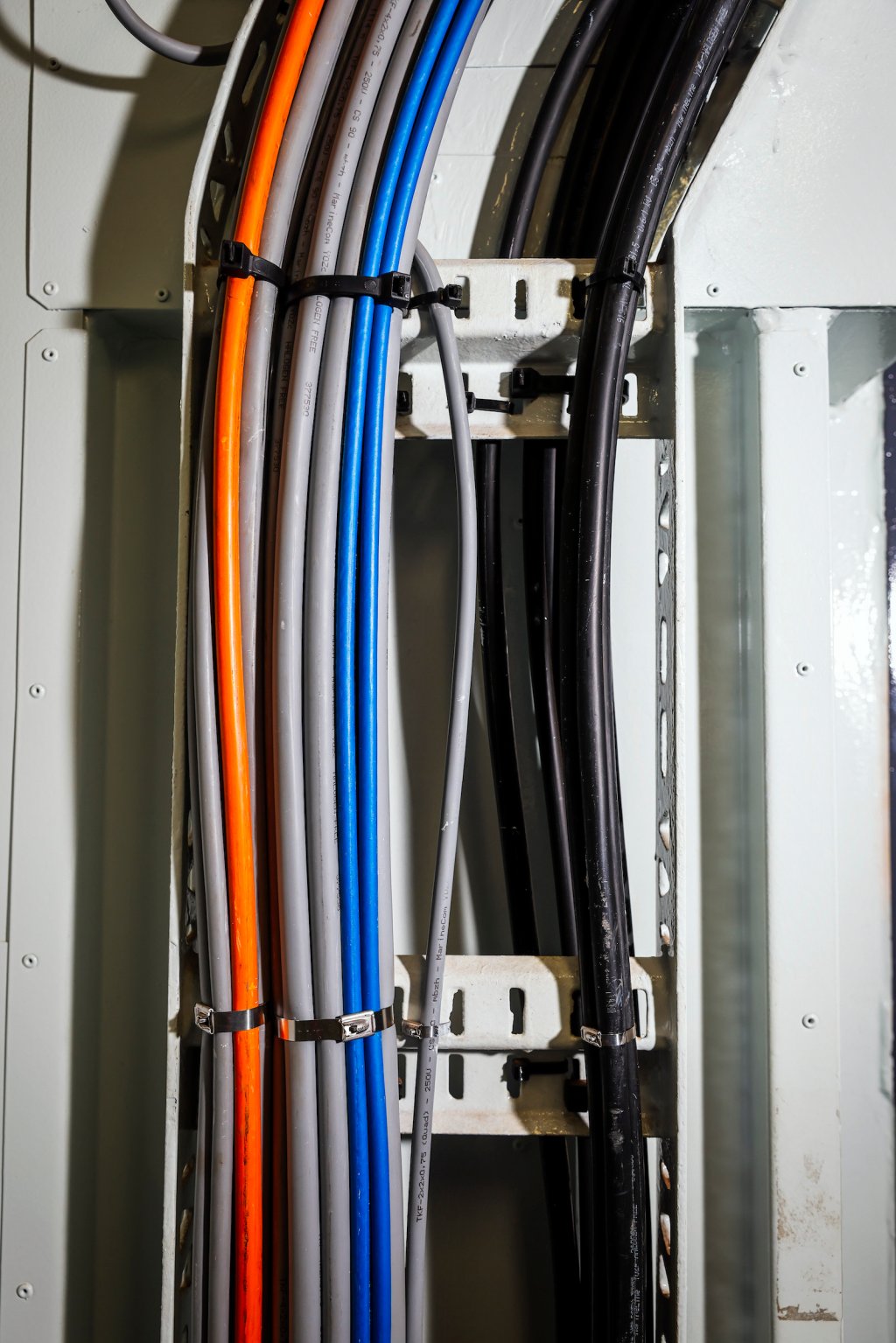
Skjeldam says the changes have to do with both customer desires for more sustainable travel, which he expects to grow in the years ahead, as well as employee demands. Hurtigruten is the largest employer in Longyearbyen, Svalbard’s main settlement. Temperatures there are warming six times faster than the global average, bringing unseasonably hot weather, glacial retreat, and more frequent avalanches triggered by unstable snow. “I speak to these people, and they reflect upon the massive changes that have happened just over the last decade, and it scares them,” says Skjeldam. “That’s driven this interest and desire from within the company on driving change and being part of the solution.”
Hurtigruten is aiming for carbon-neutral operations by 2040, and to cut all scope three emissions—those from the company’s supply chain—by 2050. But despite investing more than $70 million into emissions-reduction technology, progress has been slow, which the company blames partially on energy prices, which made it more expensive to buy low-carbon biofuels. Indeed, while Hurtigruten managed to cut about 2% of overall emissions between 2018 and 2022—emissions per customer trip remained essentially unchanged.
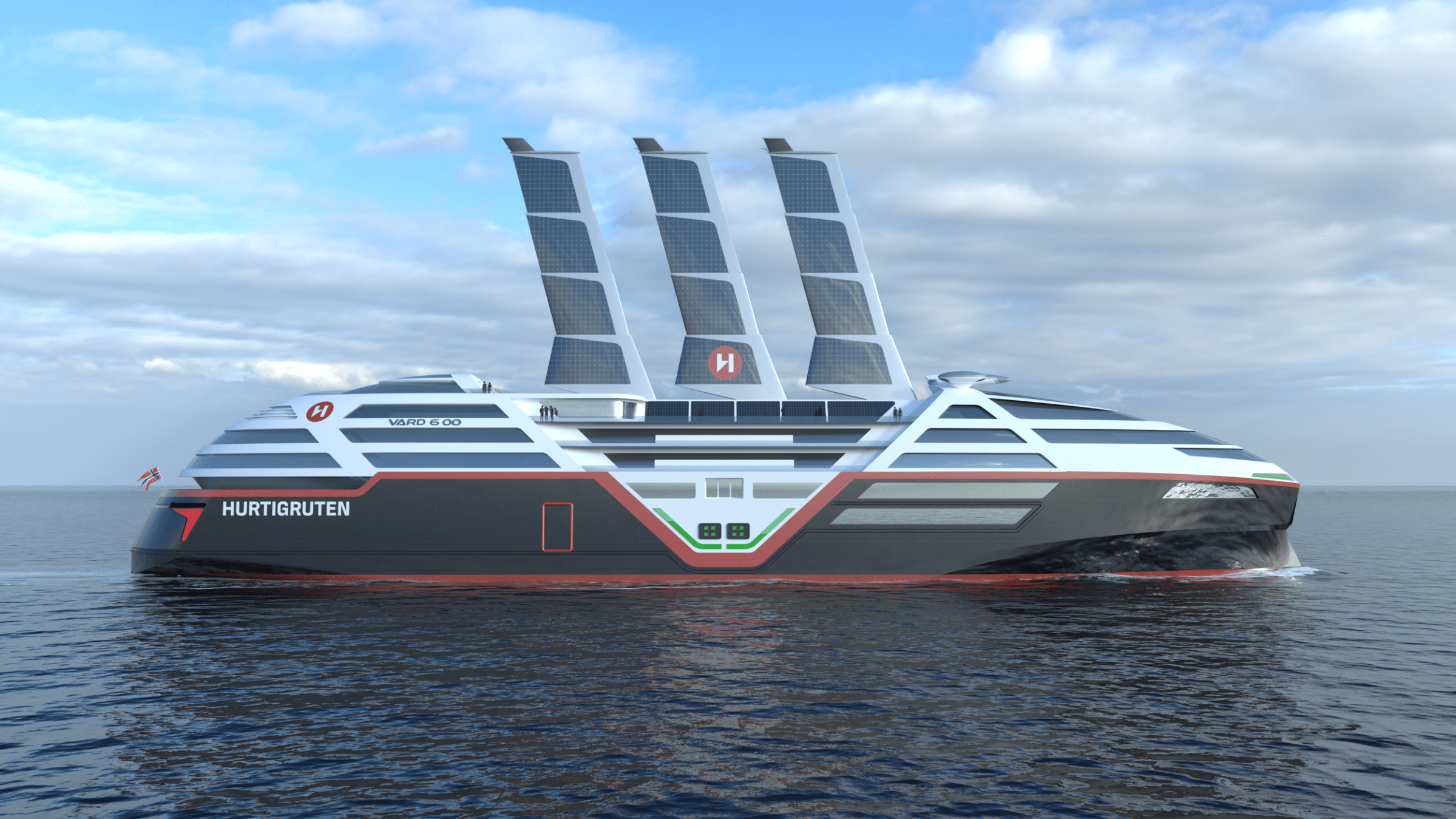
Still, Skjeldam is pushing ahead with the company’s next major project: building the industry’s first entirely zero-emission vessel. In 2021, the team began reaching out to technology firms and shipbuilders, and doing feasibility studies, figuring out what technologies—a small nuclear reactor, perhaps, or maybe using more biofuels—might work. Eventually, they settled on batteries.
There was no way to make a battery that would last long enough to use on what the company calls its “expedition” cruises—where trips vary from week-long pleasure rides the Galapagos to multi-month odysseys between the Arctic and Antarctica, and fares can range from a few thousand dollars to the price of a luxury sports car. But it might work for their flagship service: a multi-stop cruise up the Norwegian coast (which also serves as a mail and transit service between isolated fjord communities) that would offer frequent opportunities to recharge.
Even with many stops, the battery would have to be huge. Currently, the engineers are eyeing a capacity of 60 megawatt-hours, equivalent to 1,200 Tesla Model 3 batteries. This would allow it to run for well over 300 miles before recharging. Maximizing that range means finding ways to drastically cut the ship’s energy usage. To do this, the company is exploring using underwater maneuvering jets that can retract into the hull to cut drag, and a streamlined profile with a tiny cockpit-style bridge to reduce air resistance, as well as adding sails and solar panels to harness extra power. The company plans to have a final design by 2025.
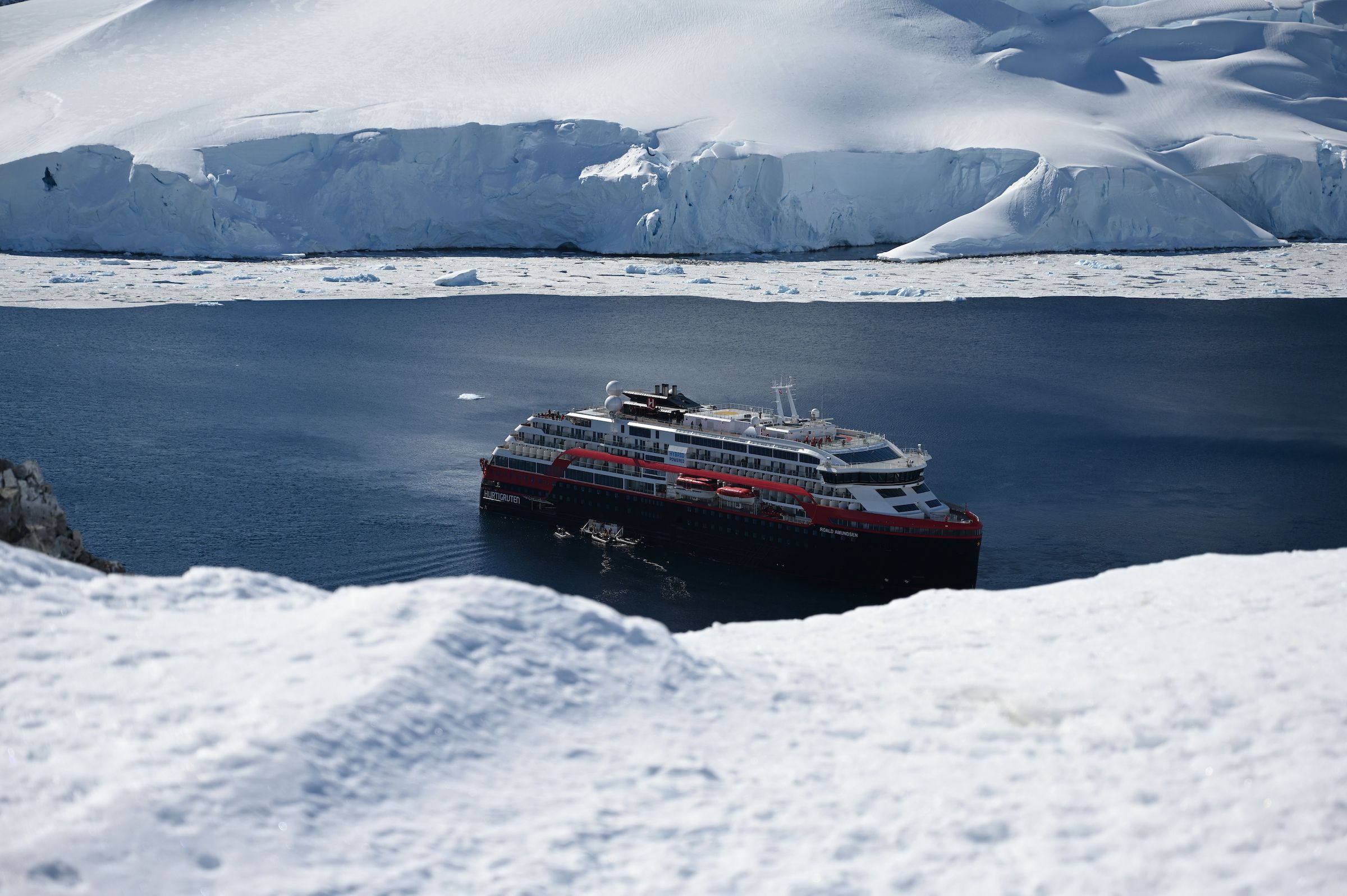
Batteries vs. Biofuels
Hurtigruten’s work may prove out some worthy technologies that the rest of the cruise industry could adopt. But the central idea of using a big battery may ultimately be impossible for bigger cruise ships, because batteries can’t store enough power in a small enough space—to get across an ocean, you’d need a battery that might take up much of an entire ship. Sails can help, but they wouldn’t be able to do more than provide an energy boost for many kinds of shipping. That leaves either biofuels or synthetic fuels produced using renewable energy—each with its own drawbacks.
Methanol, made from renewable energy and CO2, is a good choice, but making it requires obtaining CO2 from a limited supply of global biomass (demand for agricultural waste and other forms of plant-based carbon are set to explode with global demand for alternative fuels) or else using huge amounts of renewable energy to pull CO2 from the atmosphere. Ammonia is another option for the shipping industry, and it gets around the CO2 supply problem, but it wouldn’t work for passenger ships, since a leak would expose thousands of people to poisonous ammonia fumes. Then there’s hydrogen, though the lightest element can be tricky to work with, since it leaks easily and needs to be supercooled to get to high enough densities to transport, which uses a lot of energy.
Four companies—Carnival, Royal Caribbean, Norwegian Cruise Lines, and MSC—control the lion’s share of the cruise market. They’ve made some positive moves, such as investing in ships capable of running on methanol, though such vessels might continue to mostly use diesel for the time being due to lack of refueling infrastructure. But, with the notable exception of Norwegian, the big players’ current environmental plans primarily hinge on using liquified natural gas (LNG) in the newest generation of ships. Using LNG does cut down on particulate emissions and certain dangerous pollutants like sulfur and nitrogen oxides. The industry also cites the fact that LNG has about 30% lower carbon dioxide emissions than using heavy fuel oil. But CO2 isn’t the only thing that escapes from the smokestacks—the engines popular in the cruise industry leave a lot of the natural gas unburned, which gets emitted as well.
Natural gas, also known as methane, is itself a powerful greenhouse gas. With a warming potential more than 80 times greater than CO2 over a 20-year timescale, the overall emissions picture of using LNG is likely worse for global climate change than if the cruise lines had stuck with petroleum.
When asked about the use of LNG on its vessels, a representative for Carnival pointed to the company’s “long term aspirations to achieve net carbon-neutral ship operations by 2050.” MSC Cruises and Royal Caribbean did not respond to requests for comment. “There is [an] abundance of scientific data and well-respected studies that showcase the environmental benefits and value of using LNG, one of the cleanest fuels available today,” the Carnival spokesperson wrote over email. “We also are piloting other next-generation green technologies such as biofuels, fuel cells and large battery storage systems, among others.”
Currently there’s little in the way of regulations to limit greenhouse gasses like CO2 and methane from shipping. Cruise industry emissions fall under the jurisdiction of the International Maritime Organization (IMO) of the United Nations, which technically has the authority to force deep sustained emissions cuts across worldwide shipping. In practice, though, the IMO has historically been heavily influenced by those very interests, with many countries appointing industry representatives to their IMO delegations. And the powerful Cruise Lines International Association (CLIA), the industry’s international lobbying arm, has not exactly fallen over itself to help strengthen emissions standards in ongoing IMO talks on greenhouse gas reductions, according to Bryan Comer, marine shipping program lead at the International Council on Clean Transportation.
“Anything that they can do to try and make the math work in their favor and to not have to do anything is what they’re trying to do at the International Maritime Organization,” says Comer. “They set targets that already include loopholes for them, and then they fight against climate regulations in foreign policy forums, and then once the regulations are agreed, they start fighting for exemptions and adjustment factors and special treatment. And oftentimes they get it.” CLIA representatives did not respond to requests for comment. Hurtigruten is not a member of the organization.
What matters to vacationers?
Some climate activists say there’s a good argument that the cruise industry shouldn’t exist at all. Cruise ships are, on the whole, basically inherently wasteful—if you want to see the world, dragging an entire resort around with you is probably not going to be the most efficient way to do it. Compared to flying to a destination and staying in a hotel, cruising almost always has a far higher emissions profile, according to research by Comer and others. A five-night, 1,200 mile cruise results in about 1,100 lbs of CO2 emissions, according to Comer. Flying the same distance and staying in a hotel would emit less than half of that. And that’s not counting for the fact that cruise guests often also have to fly to the port where they will embark.
Bringing that argument to cruise customers, though, can be an uphill battle. The cruise industry puts a lot of money into defending its environmental image. Activists in cities like Seattle, Wash., and Juneau, Ala., often greet disembarking passengers with leaflets on cruising’s environmental effects. But some campaigners say that passengers are often impervious to volunteers’ arguments. Some passengers, says Karla Hart, an activist with Juneau Cruise Control and co-founder of the Global Cruise Activist Network, will even stop to defend the industry, saying how switching to LNG or phasing out plastic straws has solved cruising’s environmental problem. It’s a symptom, in her view, of a broader dynamic between the cruise industry and its passengers: that customers want to believe they can have the perfect vacations advertised on television and online, even though they know the reality of what they will get is far different.
“It’s a suspension of reality, to go with one’s desire for an experience that you must know you can’t have,” Hart says. “The same as suspending your rational thinking that because they’re not using plastic straws, and they switch to LED lights, that they’re not completely polluting the environment.”
A new TIME survey conducted by The Harris Poll backs up some of those points. To environmental campaigners, cruising stands out as perhaps the most polluting sort of vacation. But fully half of Americans surveyed consider taking a cruise to be “eco-friendly,” with only one in three regarding such vacations as being bad for the environment.
More Americans regard flying as being bad for the environment, despite cruising’s bigger carbon footprint per passenger.
Trying to convince vacationers to make greener choices probably has limited effectiveness anyway. Many Americans consider cruising to be an affordable vacation option—mega cruises especially tend to benefit from economies of scale. Three out of five Americans surveyed by Harris Poll consider cost to be a very important factor in their vacation planning. Meanwhile, only one in five Americans think of the environmental impacts of their vacation in the same way.
Ujwal Arkalgud, who studies consumer decision-making at Lux Research, says that a specialty cruise provider like Hurtigruten might be able to attract customers genuinely interested in sustainability, but that the mass market customers will likely only ever be interested in having a kind of green alibi. “People are not buying to save the planet,” says Arkalgud. “Because you know, one simple way to save the planet would be to not go on the cruise.”
Absent a real push from customers, activists and environmental experts say that only regulation on the level of the IMO, or across enough big ports or markets like the U.S. or the E.U., can make the industry invest in decarbonization in a serious way. “The reason why you’re not seeing a lot of investment and innovation in zero-emission vessels is because it’s a competitive global industry,” says Comer. “If you do something that costs you more, and you’re still competing on price, and you can’t demonstrate to the passenger why they ought to pay more for this, there’s not really any incentive for you to do it.”
Skjeldam supports more regulation—to a certain extent, he says, such measures to limit cruise industry pollution are inevitable. But he also has more faith that cruise-goers actually care about the environment than either activists or other cruise executives. And as the effects of climate change become more pronounced, he says, more of the world’s cruise-buying masses will begin to see the light.
“Unfortunately, there is a misconception in part of the industry, where they don’t think that their guests really are focusing on this. I think that is wrong—I think the guests will focus heavily on it in the future,” Skjeldam says. “The public demands are coming.”
More Must-Reads From TIME
- The 100 Most Influential People of 2024
- Coco Gauff Is Playing for Herself Now
- Scenes From Pro-Palestinian Encampments Across U.S. Universities
- 6 Compliments That Land Every Time
- If You're Dating Right Now , You're Brave: Column
- The AI That Could Heal a Divided Internet
- Fallout Is a Brilliant Model for the Future of Video Game Adaptations
- Want Weekly Recs on What to Watch, Read, and More? Sign Up for Worth Your Time
Write to Alejandro de la Garza at alejandro.delagarza@time.com
